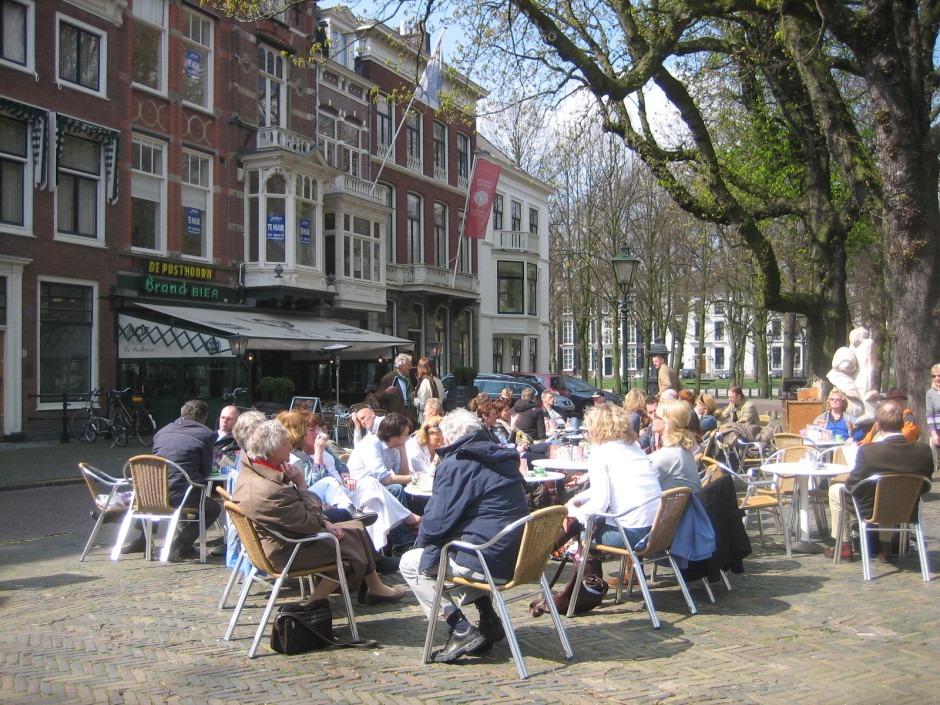The spirit of Baruch (Benedict) Spinoza, the great 17th century Dutch-Jewish philosopher, hovers over Holland’s capital, The Hague.
Spinoza (1632-1677), the scion of Portuguese Jews, lived here during his last seven years, earning a livelihood as a lens grinder after having been excommunicated by the Jewish community in 1656.
A rationalist credited with having laid the foundation for the 18th century Enlightenment, he incurred the wrath of Jewish elders by formulating positions that ran counter to prevailing Jewish beliefs.
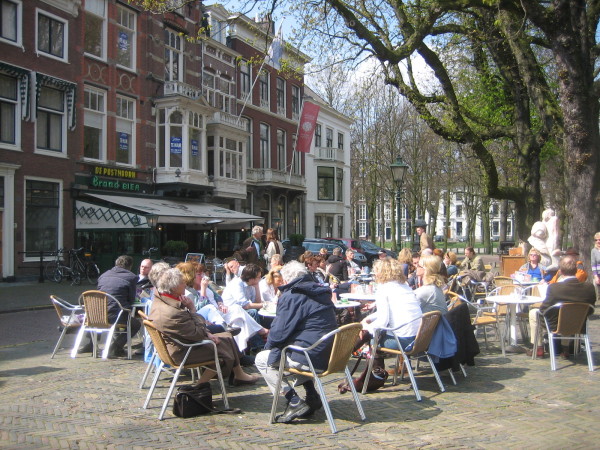
Thrown out of the community, he left Amaterdam, his birthplace, and eventually settled in The Hague, where he finished Ethics, his posthumous magnum opus.
More than three centuries on, he remains controversial in some Jewish circles.
In Holland, though, he’s a towering figure.
Before Holland adopted the euro 14 years ago, Spinoza’s portrait was on the 1,000-guilder bank note. And to this day, Holland’s most glittering science award is named in his honor.
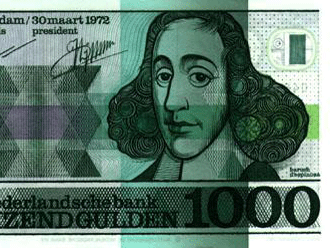
The gabled building where Spinoza lived, and the statue in his likeness erected in the 1920s and left untouched by the Nazis during their five-year occupation of Holland, are both situated in The Hague’s red light district on Doublestraat, a short street of window bordellos.
Spinoza’s grave lies on the grounds of a Protestant church, and is relatively close to the most historically important building in the city, the Portuguese synagogue.
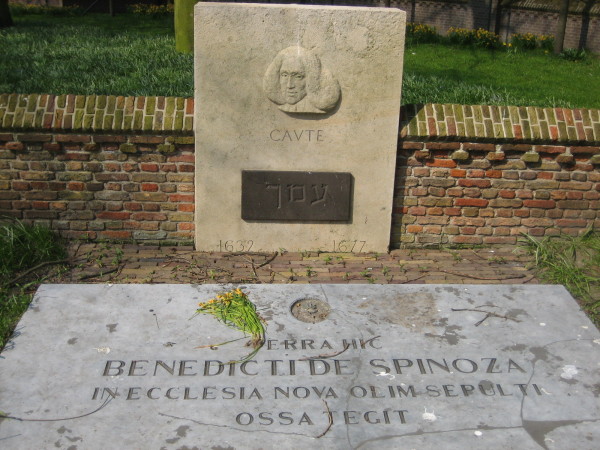
Portuguese Jews were admitted to Holland after the Spanish Inquisition. But Jewish settlement in The Hague, twinned with the Israeli town of Nazareth, did not begin until the 17th century.
In 1726, long before Spinoza’s excommunication, members of the Portuguese community inaugurated the synagogue on Prinsessegracht, a street steps away from the central railway station.
Designed in classical Dutch style by the architect Daniel Marot, the shul is plain in appearance. The front part of the building is sheathed in glass to protect it from the elements. A wrought iron gate provides further protection. Visitors are ushered in through an intercom system. Two chesnut trees in the courtyard are supposedly as old as the synagogue itself.
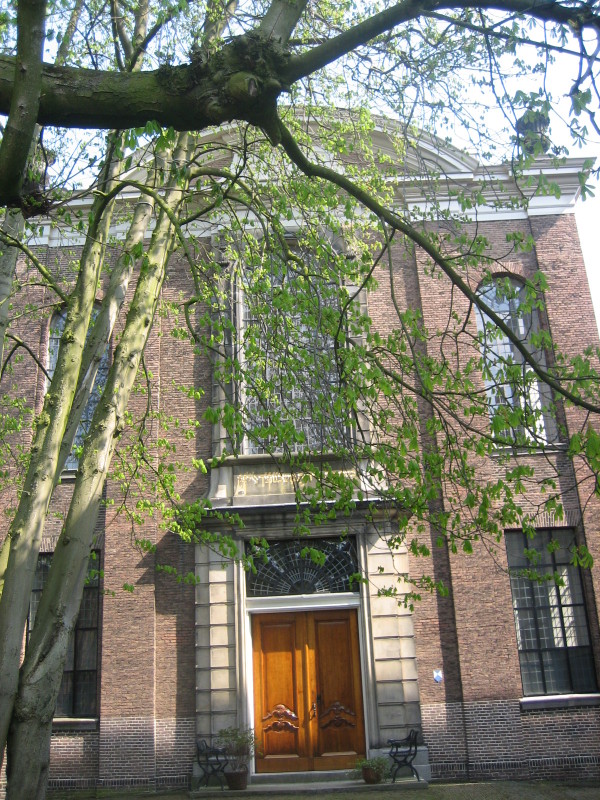
Radiating a sense of peace and quiet, the interior is simple and stolid. White-washed walls and grey Ionian pillars look down on deep brown oak benches and a rosewood ark.
During the Nazi occupation from 1940 to 1945, Jews in The Hague and the neighboring seaside resort of Scheveningen were expelled. They were forced to live in Amsterdam before being deported to Nazi extermination camps in Poland via the Westerbork camp in Holland.
Ten thousand Jews, including 400 Portuguese Jews, lived in The Hague prior to World War II. Two thousand Jews, including a handful of Portuguese Jews, survived the Nazi period by going into hiding.
After the war, a developer bought the Portuguese synagogue, which the Nazis inexplicably spared. It fell into a state of disrepair, but in 1968 it was rented for services by Reform Jews. In 1972, they bought and renovated the building with the help of the Dutch government. Extensive repairs to the roof were undertaken in 1992. The interior was spruced up several years ago.
Rescued from ruination, the synagogue is regarded as a symbol of Jewish rebirth in Holland since the Holocaust.
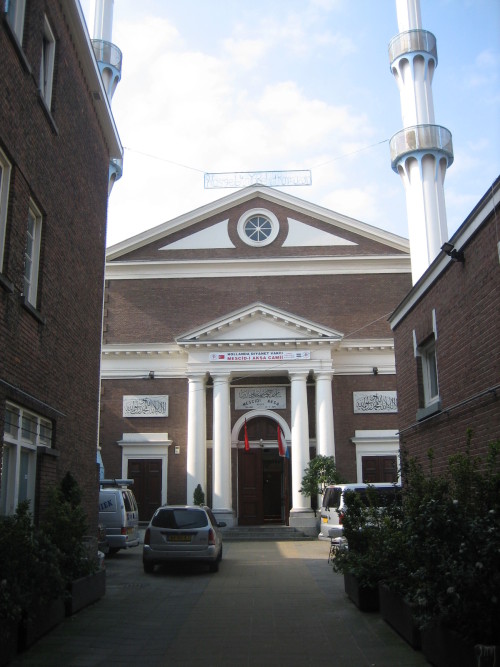
A mid-19th century synagogue in what is now Chinatown was converted into a Turkish mosque in 1974. A minaret was later added. The women’s gallery remains intact, but the bimah is gone. The Torah scrolls were taken to Jerusalem. In accordance with Dutch preservation laws, a plaque on the side of the mosque, in Dutch and Hebrew, indicates its Jewish provenance.
Chinatown, demarcated by flamboyant arches, contains two inconspicuous reminders that this polyglot district was once mainly Jewish.
Concrete reliefs and statues of two lambs and a ram above the door of a Chinese mini supermarket on Wagenstraat sugggest that this was once a kosher butcher. Nearby, in a drab building, was a mikvah. Two formerly Jewish-owned department stores, de Bijenkorf and Maison de Bonnetree, stand on the edge of Chinatown.
The Hague’s Great Synagogue, on Nieuwe Molstraat, was demolished in the 1970s and replaced by a four-storey apartment building. The pre-war Jewish orphanage on Paviljoensgracht, from which Jews were deported during the war, is now a seniors home.
On Rabbijn Maarsenplein, a square named after a rabbi who was murdered by the Nazis, a red-brick apartment building has supplanted a Jewish school.
Nearby, a monument commemorates the deportation of 1,700 Jewish children from The Hague. It’s composed of six silver iron chairs engraved with such names as Mina, Julia and Joel. A plaque on the weathered wall of the church where Spinoza is buried portrays a woman crying for them.
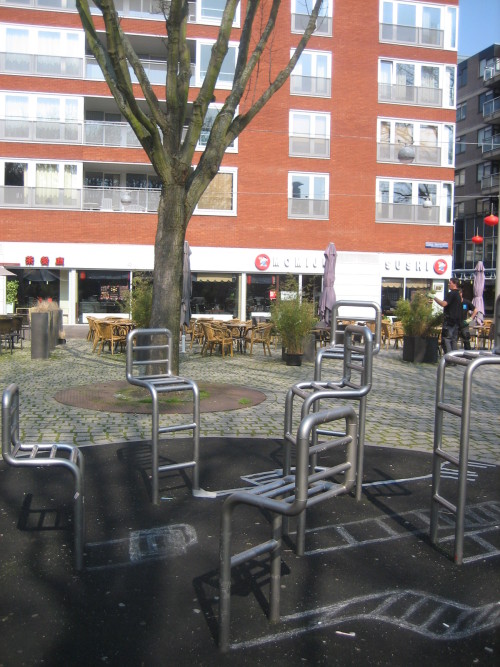
The Hague’s chief Holocaust memorial, a black stylized Star of David, seems lost in the bustle of the downtown core. Placed on a wall over ten postal boxes, it faces two restaurants.
The Voldersgracht, a busy shopping street in the heart of The Hague, was the site of a synagogue from 1723 to 1844. A black marble plaque in a dim space below street level reminds passersby that a shul once stood here.
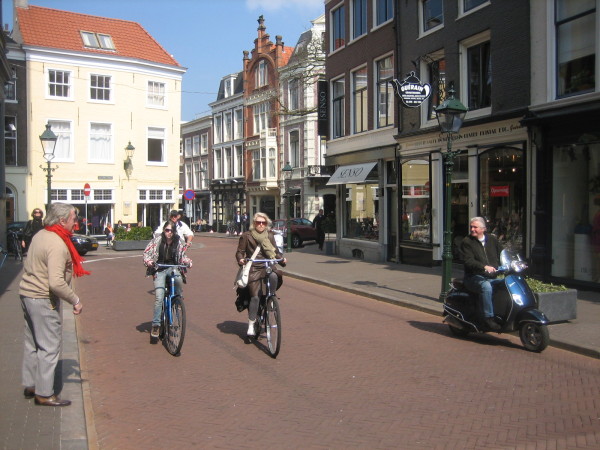
A remarkably detailed bronze model of The Hague’s old Jewish neighborhood, fabricated in 1892, is displayed inside a glass case on the second floor of the ultra-modern, brightly-lit city hall.
Which brings us full circle. Spinoza lived in this historic district until his untimely death.
